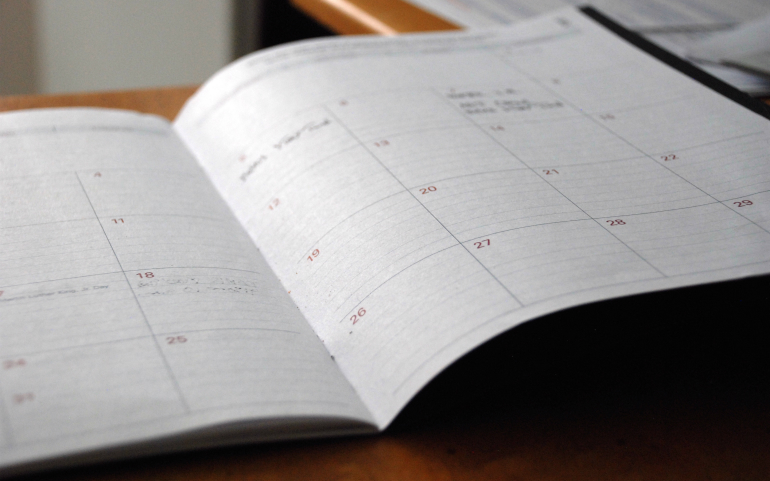
(Unsplash.com/Eric Rothermel)
After the carols and the presents, after the dinner and the storytelling, warm Christmas happiness spreads across minds and hearts. By its glow, we root around our desks for next year's calendar, the one proudly proclaiming 2017.
We may be glad to put away the old one, the one that marked our ups and downs throughout 2016. It holds the ordinary memories: appointments with dentists and doctors; birthdays; perhaps a trip to see an old friend or a new country. It remembers for us that day in traffic court, and the first (or last) day on the job. It holds the dates when things happened outside our circles, to poor people, innocent people, unsuspecting people, who lost their lives or limbs to one or another stupid act of violence. We did not mark them, but we know those days are there. We work to forgive, but not to forget.
The new calendar is clear, open to movies with friends and dinner with the in-laws. Its pages spread before us clean and bright, ready as the dawn to welcome good days, great days, ordinary days.
How will we note the days ahead?
There is of course the trusty black pen. It notes our plans most permanently this coming year. We could use pencil, but why be tentative about those things closest to our hearts?
Pencil is for appointments that we — or they — may change. Pencil is for what we might do, if we have the time. Pencil is for dreaming.
Black pen is permanent. Pen marks the birthday. Pen notes when we'll have lunch with Mother, or a friend.
Right now, that calendar is mostly empty, except perhaps for those few weeks in summer, its months open wide to adventure and to joy.
What will 2017 bring? The world around us limps toward the new year damaged in so many ways. Atrocities burst all around us into the world's consciousness.
How can we mark the calendar to maintain a sense of peace?
If we think about the seven deadly sins, and their associated colors, perhaps there are some markers we need to metaphorically throw away. We cannot avoid the seven completely. They may be subtle shadows, or they may be icebergs in our hearts. No matter. We can lose them in the year ahead.
Start with the red marker. It is the color most associated with anger, the bear that sits behind us ready to pounce on a memory and rip it to shreds until we are crying mad.
The green one can go too. That one is for envy, barking at our heels because someone has what we do not.
It's next-door neighbor, the yellow one of greed, can go out the door as well, croaking as it leaves. If we open our hands and hearts, we understand we do not need it.
The orange one is next; it notes the pig-like gluttony that comes from falling prey to greed. Again, just let go.
Then, put away the blue ones — the dark blue of lust and the light blue of sloth. Each promises significant comfort, but a comfort that is fleeting and a comfort we do not need.
Purple is for pride, the peacocking belief that we are better, somehow, than the next one. Ask Goethe about pride, and he'll give you a copy of Faust; ask Milton and he'll point to Paradise Lost. Of course, Dante runs the gamut — from anger to envy to greed to gluttony to lust to sloth to pride — in his Divine Comedy.
So, are we stuck with only permanent black and temporary pencil?
Not really. Healthy colors on the calendar need not blot out its promise. Colors on the calendar can signal special things and special people. But if we find ourselves red with anger or green with envy, we might remember there is something else to life. If we are yellow with greed or gluttonously orange, we might try to loosen our grips on whatever grips us. The blue shades of lust and sloth together mark the depressed blue that slows our smiles. For sure, pride's purple steps ahead of (and often on) the next person we meet.
Why go through this exercise? Why pick on simple colors of the rainbow? Maybe to remind us of what they signified to medieval writers and to so many others, who knew and took quite seriously the world's problems then and who predicted the blotches on the calendar just closed and on the one to come.
The world reels at the attacks of evil, at the ways those seven categories fill up the nightly news. But we can and should greet the new year with gratitude, ready to mark permanently and with joy each wonderful day.
Blessings on your 2017.
[Phyllis Zagano is senior research associate-in-residence at Hofstra University in Hempstead, N.Y. Her most recent books include The Light of the World: Daily Meditations for Advent and Christmas, Women Deacons?: Essays with Answers and In the Image of Christ: Essays on Being Catholic and Female.]


